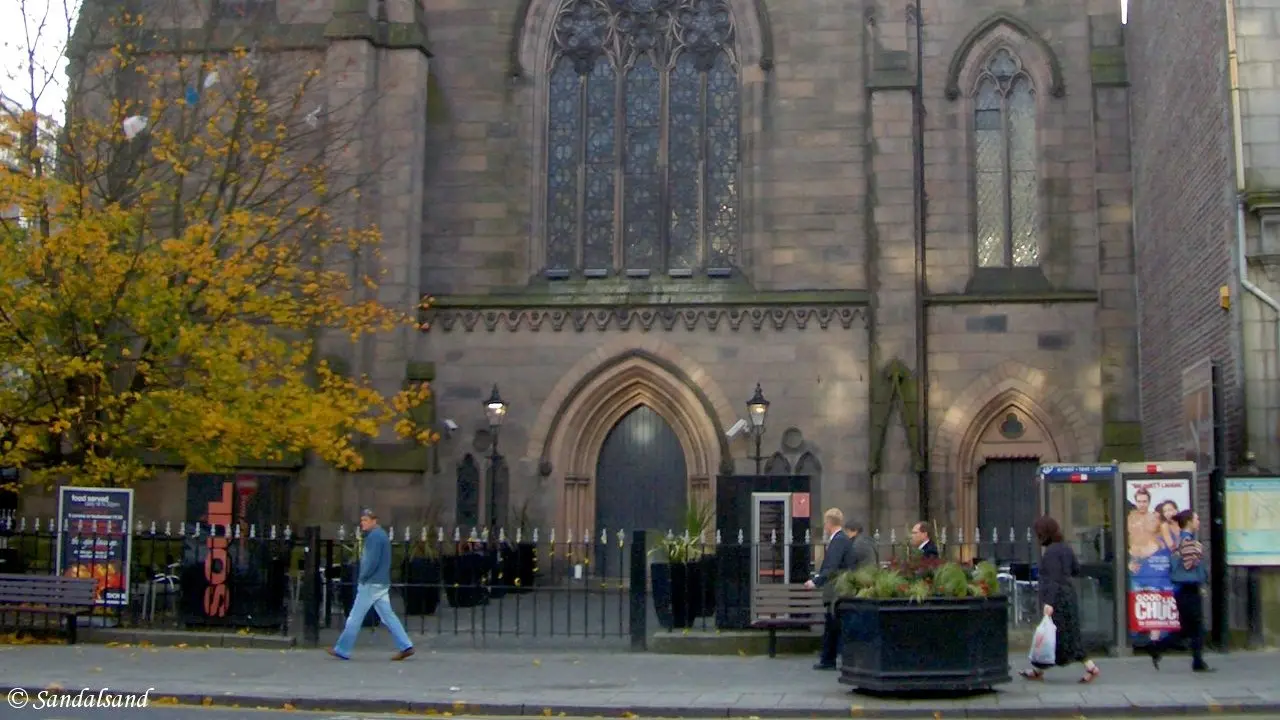The Granite City of Aberdeen is Scotland’s third largest and presumably the one with the most churches turned into “dens of sin”. As such it was an astonishing place to visit.
Impressions from walking the streets at day
From the mid-18th century they produced fine, grey granite from local quarries. They then turned the granite into several impressive buildings in the growing coastal town of Aberdeen.
In recent years Aberdeen has prospered as the oil capital of Scotland. Its Norwegian counterpart across the North Sea, Stavanger, is my home town. I was not looking for traces of that industry here. Instead I concentrated on walking the long Union Street to the harbour area. Then I criss-crossed the side streets. It was a pleasant town.
I was struck by the number of churches as I walked the streets. The Scots must have had strong religious sentiments in the old days. Not any more: Aberdeen has become the least religious city in Scotland. What is now the case reveals itself at night. Several churches have been decommissioned as religious objects, and turned into bars and nightclubs. I had never seen anything like it.
And at night
In one such establishment the DJ held a commanding position up on the old pulpit. The central nave was now a long bar. The side chapels held seats where yellow buckets of beer bottles were passed from visitor to visitor. This is a huge contrast to the good old pouches used to collect donations to the church. Indeed, a minister who once returned to perform his old practice was thrown out of a bar, according to a newspaper article.
The nightclub in another of these former places of worship had a crowded dance floor, thumping techno music, and smoke machines. Drunken guests would rave in the sacristy and other side-rooms.
I was astounded and concluded that such a practice would not be possible in Norway, at least for years to come. If ever. On the other hand I did realise the potential benefits of it. These magnificent buildings are filled with life, joy and activity instead of being left to decay and possibly demolished at a later stage.
An excursion
This “social” part of my job trip to Aberdeen also gave the opportunity to visit part of the Scottish countryside and taste the traditional “haggis”. We went on a guided bus trip straight west of Aberdeen to the old Crathes Castle, in Aberdeenshire. It had some very nice gardens. The castle itself looked more or less like a medieval fortress. It has acquired larger windows and more windows in recent years. The fights between the clans must have been fierce in the old days.
We continued to a whisky distillery for a tour and tasting, very good. On the way we passed the gate to the Queen’s Balmoral Palace and stopped for lunch somewhere else (apparently the palace is open to the public when the royals are not present).
Wikipedia describes the haggis some of us had for lunch as “a kind of savoury pudding containing sheep’s pluck (heart, liver and lungs); minced with onion, oatmeal, suet, spices, and salt, mixed with stock, and traditionally encased in the animal’s stomach and simmered for approximately three hours.”
Well, right. Some might not find this tempting at all. I looked forward to it and had a good meal. It was certainly not the best lunch I’ve had, but definitely, (what should I say?) interesting.


